Church of England Grammar School – 5th place
Despite their low placing, Shore should be proud of their improvement since last year and also during the course of the season.
Going into the competition no one thought much of them, and no one expected that they’d pull off the upset of the year in beating Riverview in Round 9, nor that they would fall just two points short of Scots in their return match.
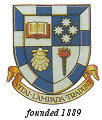 That said, they were disappointing in losing to Kings in their last game of the year and allowing Joeys to snatch a draw at the death in the return match.
That said, they were disappointing in losing to Kings in their last game of the year and allowing Joeys to snatch a draw at the death in the return match.
Though they showed improvement they needed more consistency from game to game.
The character and resolve of the side was admirable, and was evident in their improved results from last year. They also challenged and played their best even when the consistency was not there and there was little to play for but pride.
The team had individual flair, with players like Jum Woodhill (#7), Matt Dowsett (#13 and 11#), Will Connelly (several) and Harry Emery (#9) standouts in the games this writer saw.
Their forwards did not dominate opponents often but they made up for it with a high work rate and working well together – plus responding to the driving force of skipper Woodhill in their midst. Their backs needed a few more game-breakers but managed to score some great tries over the season nevertheless.
Best players – 3. Jum Woodhill (#7), 2. Matt Dowsett (#13, #11), 1. Harry Emery (#9)
The King’s College – 6th place
Kings had a disappointing season and like Newington and Shore were inconsistent; they won only two matches in the year.
They were thrashed twice by Scots and Riverview once; Joeys put on over 40 points against them also. Were it not for the leveling impact of Sydney’s wet weather one thought that there would have been more big scores against them.
And yet they were capable of beating Newington in Round 3, and the improving Shore in their return match in the last game of the season.
 They had some good players especially George Lehmann (#6) and David Ballantyne (#8), but although they were helped by rep players Charlie Allison (#4) and Hugh Taylor (#7) the other two had to carry too much of a load up front.
They had some good players especially George Lehmann (#6) and David Ballantyne (#8), but although they were helped by rep players Charlie Allison (#4) and Hugh Taylor (#7) the other two had to carry too much of a load up front.
Backs like Nick Stubbs (#12) and Hugh Yates (#11) had some good moments but it’s fair to say that they lacked a couple of consistent game breakers that the other teams had. James Kane (#15) was sorely missed for many weeks in this regard.
Before the season started Kings were not expected to challenge for the title this year. Their recent form had not been stellar in the First XV or the 2nd XV competitions because they had not won a title, nor even a runner-up position, in the previous four years, in either.
But this season the Second XV came up trumps and their 19-7 win against Shore in the last game of the year ensured them of the pennant. Well done those lads.
Best players – 3. George Lehman (#6), 2. David Ballantyne (#8), 1. James Kane (# 15 – when he played)
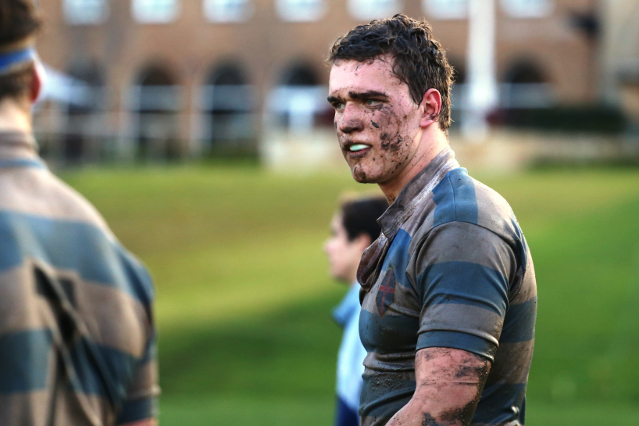
Second XV competition
Towads the end of the season this became a two-horse race between Joeys and Kings.
At the end of Round 4 the teams were level but when Joeys lost a squeaker to Newington in Round 5, Kings were in front at the halfway mark. In Round 8 Joeys drew with Riverview and went a further half-point behind.
Kings would win the competition if they beat Joeys at Hunters Hill in Round 9. They didn’t, but although Joeys won, Kings were still a half-point ahead.
It all came down to the last round—although Joeys thrashed Newington to get revenge for their earlier loss, Kings beat Shore to end the season half a game in front, to become deserved Second XV Champions.
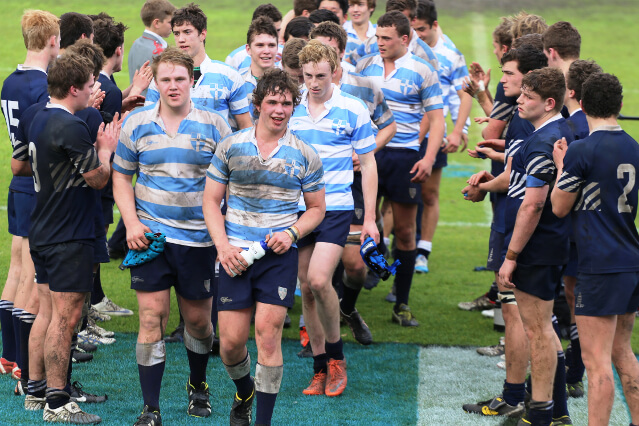
Third XV competition
Segment by Jim Belshaw
The Thirds is the only official NSW GPS competition in which all nine GPS schools play, with the Firsts from the smaller rugby schools (Grammar, High, Armidale) competing against the Thirds from the other six schools.
This makes for something of a scheduling nightmare, but gives more boys (and schools) a chance to play top grade rugby without being beaten by big margins.
The first Third XV competition in 2013 was a considerable success marked by fast flowing rugby in which the final winner (Armidale) was not decided until the final round.
After this success, there was both uncertainty and expectation as the 2014 season dawned.
The pre-season games suggested that Grammar was going to be strong, something that was confirmed in the Round 1 when they inflicted a 22-0 defeat on Armidale. That first round also suggested that Scots would be a force following a convincing 28-5 win against a strong High side.
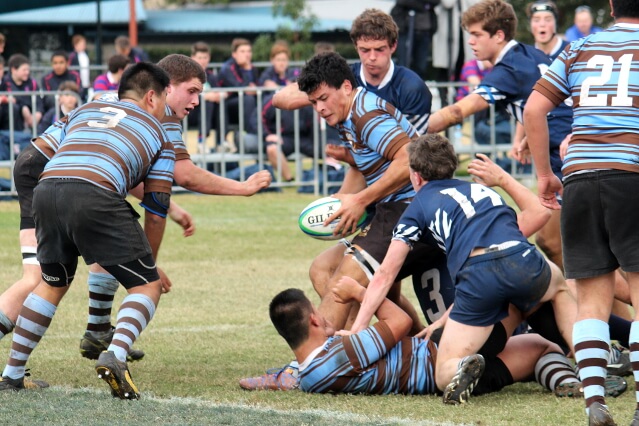
By the end of Round 3, Scots and Grammar had opened a two-point lead, with Armidale and Riverview two points behind. However, Armidale’s 17-0 win over Shore in Round 3 indicated that it was picking up speed after a slow start.
At the end of Round 5, Grammar, Scots and Armidale were all locked first on equal points, and would remain so until the end.
Grammar last won the GPS First XV competition in 1967. It joined the Third XV competition in 2013; so this is the first time in 47 years that it has won or shared the honours in the highest level of GPS competition they have played in.
2014 had been another enthralling competition marked by some brilliant running rugby.
Third XV player of the year
Since players from schools “outside the six” are involved we thought it appropriate to award a Green and Gold Rugby Player of the Year Award to the best player in the Third XV competition.
That award goes to inside centre Alec Sheldon from Sydney Grammar School.
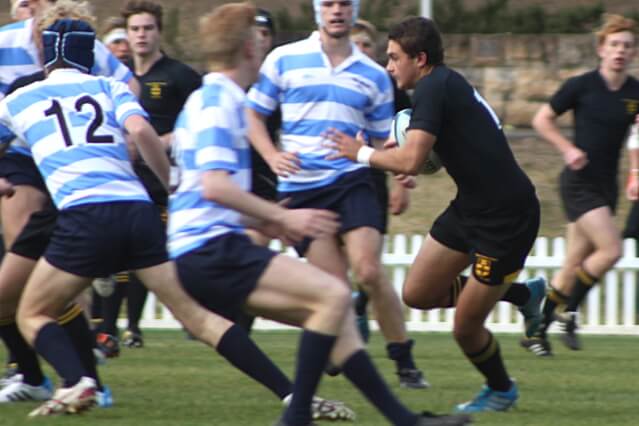
Alec plays inside centre for Grammar but was chosen as flyhalf for the GPS Blues (Thirds) and the President’s XV U16A’s.
He has a sizeable boot and can kick with both feet. He also has good hands and can pass long both ways. His defence is effective and he has strength in contact, and good footwork.
Although only in Year 10 this is his second season in the SGS 1st XV. He is definitely one to watch.
Kings photos above by “Anonymous George”
Click on right arrow for Page 3

